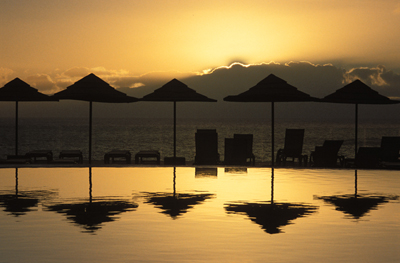 Low-light conditions occur indoors, during inclement weather and of course as darkness descends. Many photographers put away their cameras away under such conditions but by doing so miss excellent photographic opportunities. Colours darken and merge together, subtle tones dominate and the eye becomes more sensitive to small tonal gradations. Some subjects are easier to photograph with a fast lens, perhaps having a maximum aperture of f/2 or f/1.4, but for others it is preferable to use a very slow shutter speed to maintain depth of field.
Low-light conditions occur indoors, during inclement weather and of course as darkness descends. Many photographers put away their cameras away under such conditions but by doing so miss excellent photographic opportunities. Colours darken and merge together, subtle tones dominate and the eye becomes more sensitive to small tonal gradations. Some subjects are easier to photograph with a fast lens, perhaps having a maximum aperture of f/2 or f/1.4, but for others it is preferable to use a very slow shutter speed to maintain depth of field.
The best period for urban landscapes begins about half an hour after sunset when the glow of artificial lights becomes attractive and there is still sufficient natural light to provide a colourful backdrop. Coastal scenes and other similar subjects may also be at their best at this time. The only natural light is reflected from the sky, which itself takes on all sorts of attractive colours. Still water also reflects the colours in the sky so the effect can be magical. The light changes rapidly during this twilight period, so it is important to be ready when the optimum time arrives.
Small apertures are often necessary to achieve the required depth of field and slow films or low ISO settings are preferred. Shutter speeds must therefore be slow – typically ten seconds or more. Use a tripod and a remote release to reduce camera movement at the moment of exposure. If using an SLR, lock up the reflex mirror to reduce vibration further. Reciprocity failure, the breakdown of the linear relationship between aperture and shutter speed, may consequently become an issue. Film manufacturers quote reciprocity characteristics for every film type so check the compensation necessary for the selected shutter speed.
The most difficult aspects of low-light work are handling contrast and obtaining the best exposure compromise. Take spot measurements from areas of the scene that should be “correctly” exposed and consider how brighter and darker areas will be rendered given the latitude of the medium in use – five and seven stops for slide and negative film respectively, and perhaps a little more for digital sensors. Adjust the basic exposure measurement to make use of the medium’s latitude and, in the case of film, for reciprocity failure. Finally, it is wise to bracket exposures in small steps to give a variety of different images.
After dark there are still lots of possibilities. Fireworks, traffic trails, neon lights, illuminated streets and buildings, festive decorations and interiors of various types all make worthwhile subjects. Concentrate of filling the frame with illuminated detail as large black areas will certainly be uninteresting. If necessary, use the B (bulb) setting to keep the camera’s shutter open for several minutes.






